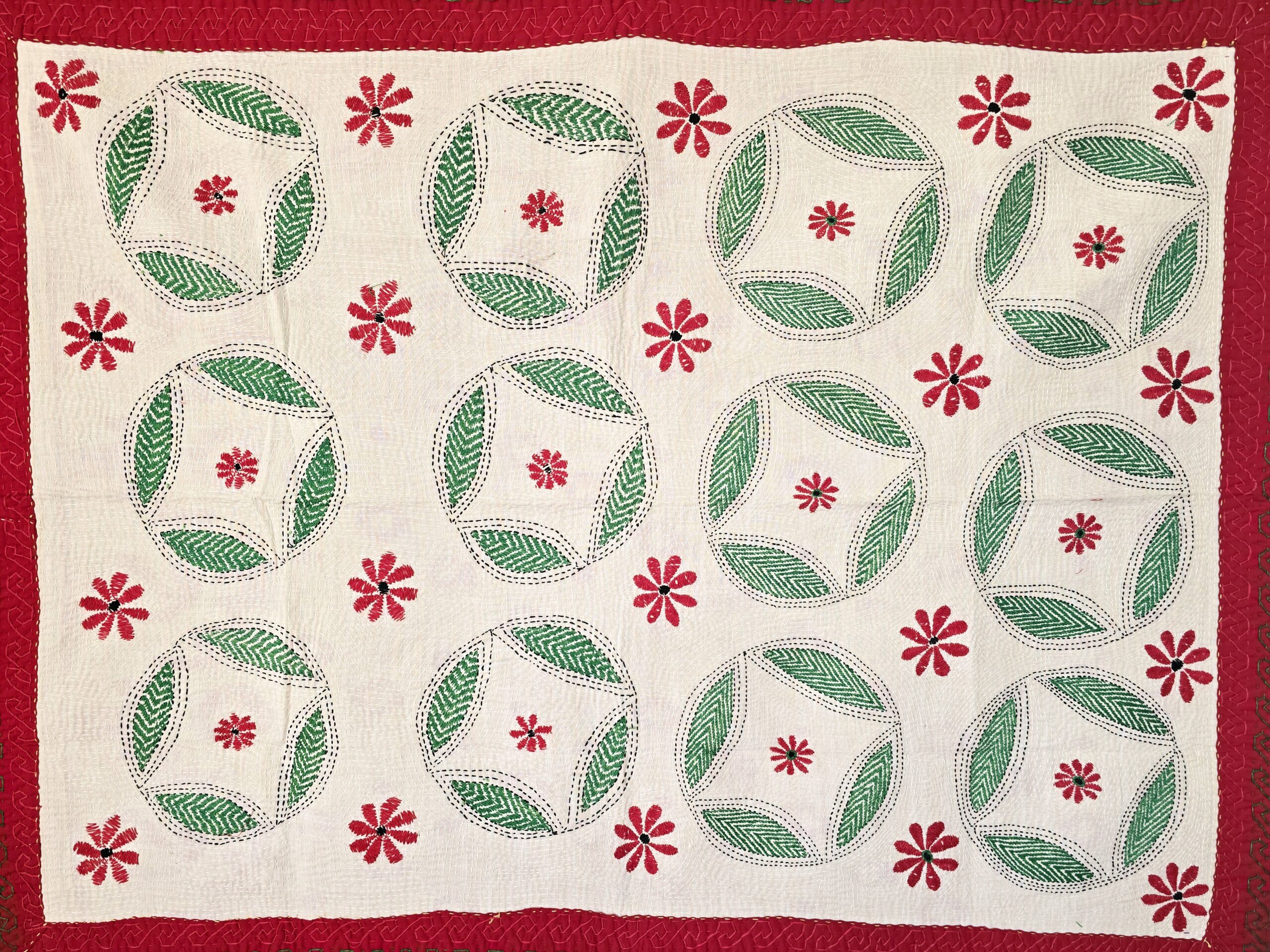

‘Kantha’ is an embroidery art from India that traces its root back to centuries. It has been traditionally carried out by women. Over the years the art has been revived in terms of its usability and purpose – what started with making hand-embroidered quilts for personal or family use found its way into apparels and other items. However, what remained constant throughout the years was that it has always been the women who have crafted the ‘kanthas’ – whether in quilts or apparel.
My interest in this art form has taken me several times to the villages where the women stitch or hand-embroider ‘Kantha’. The intricate designs that are crafted by the women by bare hands– some from systematic sketches and often from purely free flowing imagination on fabric, are a true testimony to hours of diligence and hard work.
It is commonplace to see here that large items like quilts with complex patterns are worked on by women working simultaneously on them at different ends of the fabric, for many hours. I have always marveled at the sheer interpersonal harmony and coordination of skills that is required of this arrangement to work successfully!
So, what works here?
‘Kantha’ making is not just pure artwork but it is also the union of dialogues, emotions, thoughts and stories of the many women, from different religious backgrounds and cultures coming together. It is this sisterhood, that makes it possible to translate intricate mythological scenes into fabrics irrespective of the crafter’s religion or background.
In a world that is so divided otherwise, this kind of sorority is a pleasant exception and probably is an inimitable example of the unity brought about by Art
Picture courtesy : From one of my travels, at a ‘Kantha’ exhibition sponsored by a local authority.
Share:
We are a brand that promotes sustainability from source to consumption of our products and brings to you unique one of its kind products that will elevate your experience, pamper your taste for good things.
© Ohana Earth 2024